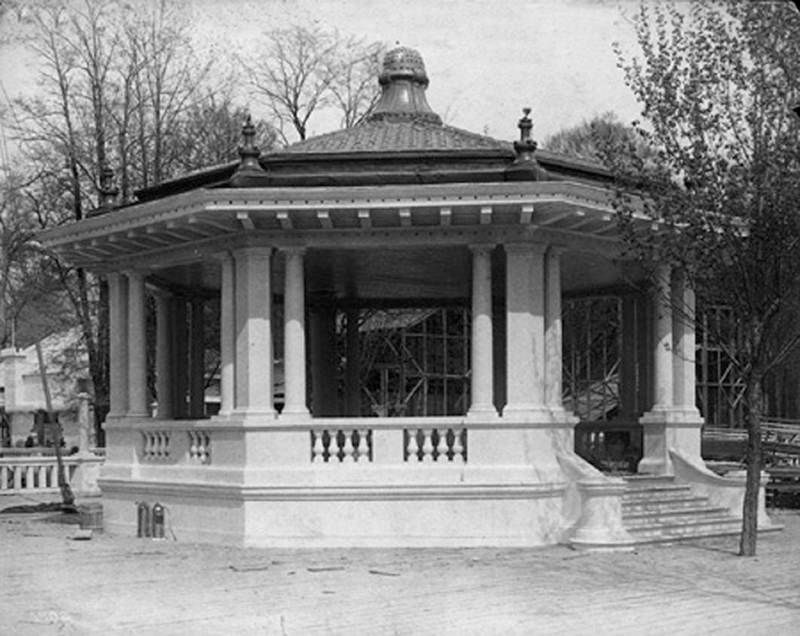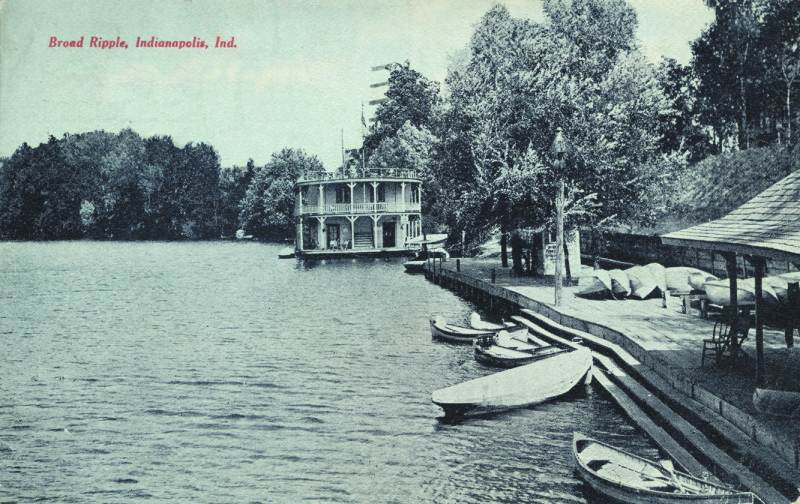
|
Broad Ripple Random Ripplings

The news from Broad Ripple
Brought to you by The Broad Ripple Gazette
(Delivering the news since 2004, every two weeks)

|
| Brought to you by: |

|

|

|

|

|

|
Converted from paper version of the Broad Ripple Gazette (v03n15)
White City Amusement Park at Broad Ripple: part two - by David G. Vanderstel and Connie Zeigler
posted: Jul. 28, 2006
An excerpt from In Pursuit of Leisure Time: The Development and Role of Amusement Parks in Indianapolis 1880s - 1970. A Research Report completed for a Project supported by an Indiana Heritage Research Grant, a joint program of the Indiana Historical Society and the Indiana Humanities Council. Published December 1992
One of the most intriguing attractions at White City was not completely finished by opening day, but it so impressed the city that an article about it appeared in newspapers shortly after its opening. This new exhibit was the baby incubators. Under headlines which read, "Tiny Creatures Being Nurtured by Science," the following description of this latest attraction appeared:
several of the tiny creatures who are to be brought to strength, with dimples in their cheeks and laughter still many days distant, are already being cared for at the baby incubator display which is in a specially prepared building near the north end of the amusement park . . . . 98
This attraction, copied from the Coney Island parks in New York, reflected Hoosiers' increasing interest in science and industry as well as their fascination with oddities and marvels.
White City offered a variety of programs and amusements to compete with other local amusement parks. Like Wonderland, its competitor on the eastside, White City included free attractions within the price of admission. During the week of 22 July 1907, the Indianapolis Military Band played free concerts daily. Other performances included concerts by Wheelock's U.S. Indian Band, aerial gymnastics, and vaudeville shows. 99 White City also capitalized on its location along White River. Like Riverside Amusement Park, White City provided its customers with the added attractions of swimming, boating, and canoeing, recreations that land-locked Wonderland could not offer. The twenty-cent adult admission plus the five-cent street car ride opened the broad vistas of White City to any who could afford to attend. True to its advertisements, for a while at least, White City was "the amusement park that satisfied." 100
The White City gazebo from a 1905 postcard.

In its second season, White City, promoting itself as "proving more popular than anticipated," improved its swimming facilities along White River by lining the beach "bottom and sides" with concrete. The amusement company invested some $40,000 to copy this idea from a park in Columbus, Ohio. The newly-concreted beach also included a broad promenade from which strollers could watch the swimmers. Nearby, a two-story pavilion, covered with thousands of incandescent lights, provided another location from which to observe the swimmers. 101
The year 1908 was a determining one in the history of White City. On 26 June, C. McKinney was inside the "Seeing Chinatown Charlie" show, a side attraction of the "Mystic Cave." Spying a tiny flame, McKinney at first thought it was part of the show, but decided to call an attendant who tried to extinguish the fire with a bucket of water. Despite his efforts, the flames spread quickly, engulfing the building where the "Mystic Cave" and the imitation "opium den" were housed. A brisk wind fanned the fire away from the burning building. The flames rapidly swept the quadrangle, destroying the skating rink, scenic railway, electric theater, roller coaster, the poolroom and bowling alley, Bert Swan's alligator show (with the help of onlookers Swan saved the alligators), the park's general offices, a restaurant near the river, and finally, the grove of beautiful trees that covered the grounds. 102
This early postcard shows the docks on the White River at Broad Ripple park.

image courtesy of the collection of Sue Zobbe
The next morning, Robert C. Light, vice president of the recently reorganized White City Amusement Company, reported that the park was a total loss. He estimated the loss at $160,000, none of which was covered by insurance. 103 Only Soko Sujiyama, owner of the Japanese bowling alley, was covered sufficiently by insurance. The only bright spot on the horizon for White City Amusement Company on the warm June day after the fire was the absence of damage to the newly-constructed swimming pool, which was scheduled to open the next day. But White City Amusement Park in Broad Ripple was no more. 104
an old postcard shows a birds-eye view of White City.

image courtesy of the collection of Dr. Tom Connell
end part two
References for Broad Ripple Park part two
98 Indianapolis Star ?, 10 June 1906.
99 "Crowds Throng City's Big Playgrounds," Indianapolis News, 13 May 1907, p. 3.
100 Ibid.; "White City Aglow For Its Opening," Indianapolis News, 6 May 1906, p. 31.
101 Ibid.; "Contract is Let for Pool," Indianapolis Star, 19 May 1907, p. 18.
102 "White City Amusement Park is Destroyed by Fire," Indianapolis Star, 27 June 1908.
103 Indianapolis Star, 27 June 1908, p. 1. Included in this article is a partial list of White City losses: Arch at main entrance, owned by the White City Amusement Company, $1,500; ticket validating office, owned by White City Amusement Company, $100; power house, engines, and equipment, owned by White City Amusement Company, $2,000; billiard parlors and bowling alleys, owned by White City Amusement Company and under lease to Gray & Stone, $2,500; alligator show, owned by Bert Swan, $800; The Great London Ghost Show, owned by Harry Gilman, $800; picture gallery, owned by the White City Amusement Company, $350; vaudeville show, owned by the White City Amusement Company, $800; popcorn stand, soda fountain, and ice cream stand, owned by Weber & Boggs, $2,000; baby incubator show, owned by White City Amusement Company, $2,500; cafe, operated by William Poor, $1,200; roller coaster, loss on track, rolling stock and machinery, owned by White City Amusement Company, $5,000; human roulette wheel, new and total loss, owned by White City Amusement Company, $3,500; Mystic Cave, owned by Smith & Milburn, $2,500; Bump the Bumps, owned by the White City Amusement Company, $800; shooting gallery, owned by Smith & Milburn, $800; American Novelty Stand, "Dart" Gun Stand, Knife Rack, "Chicago Board of Trade," Japanese Fish Pond, Cane Rack, "Nigger Baby" Rack, owned by Smith & Milburn, $150 each or $1,100 total; scenic railway, owned by Jones, Lenick and Schafer, $21,000; skating rink and dance hall, just completed and total loss, operated by Frank Keller, $6,000.
104 Indianapolis Star, 27 June 1908, p. 1.

|

|

|
| Brought to you by: |

|

|

|
| Brought to you by: |

|

|

|


